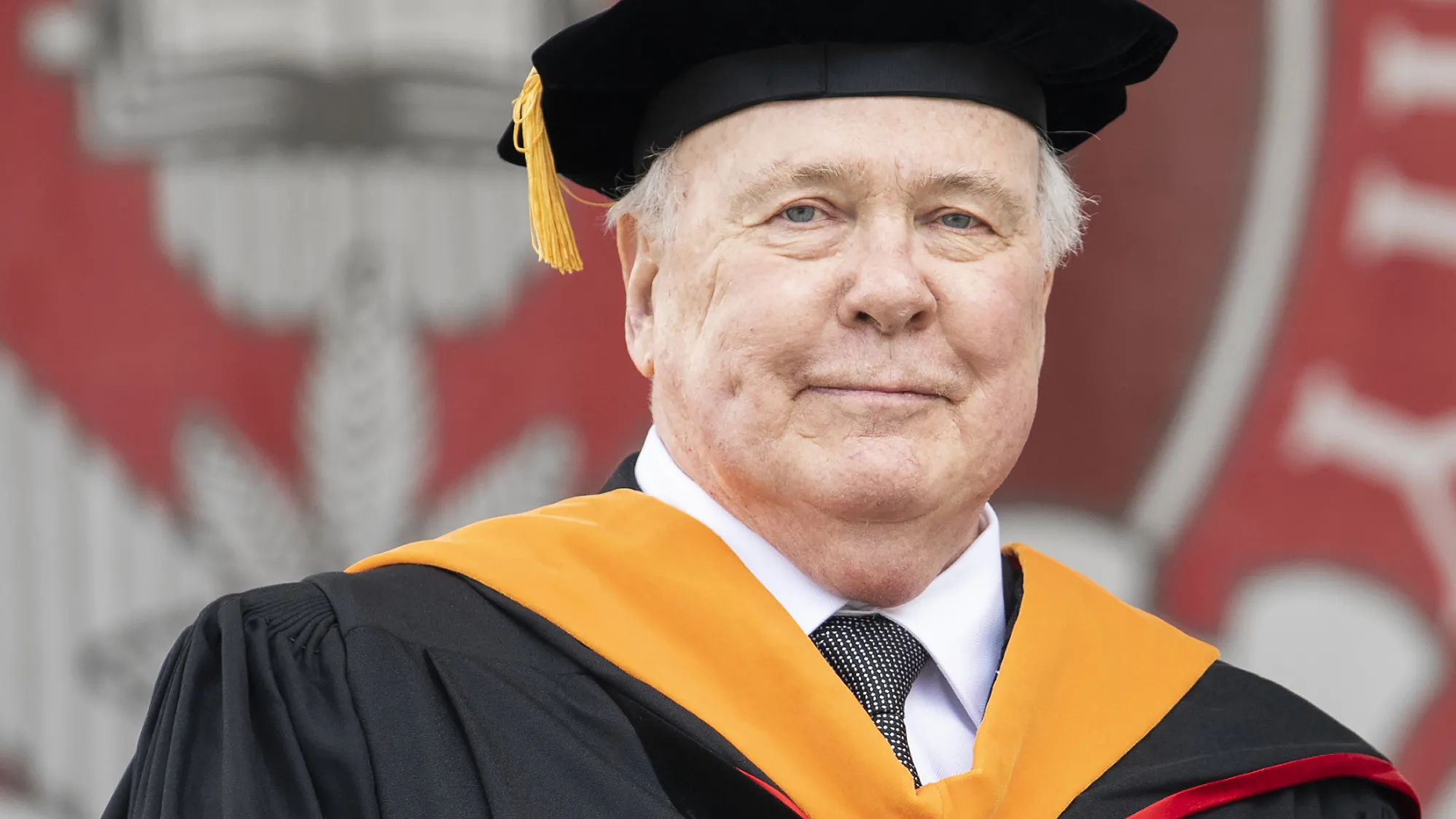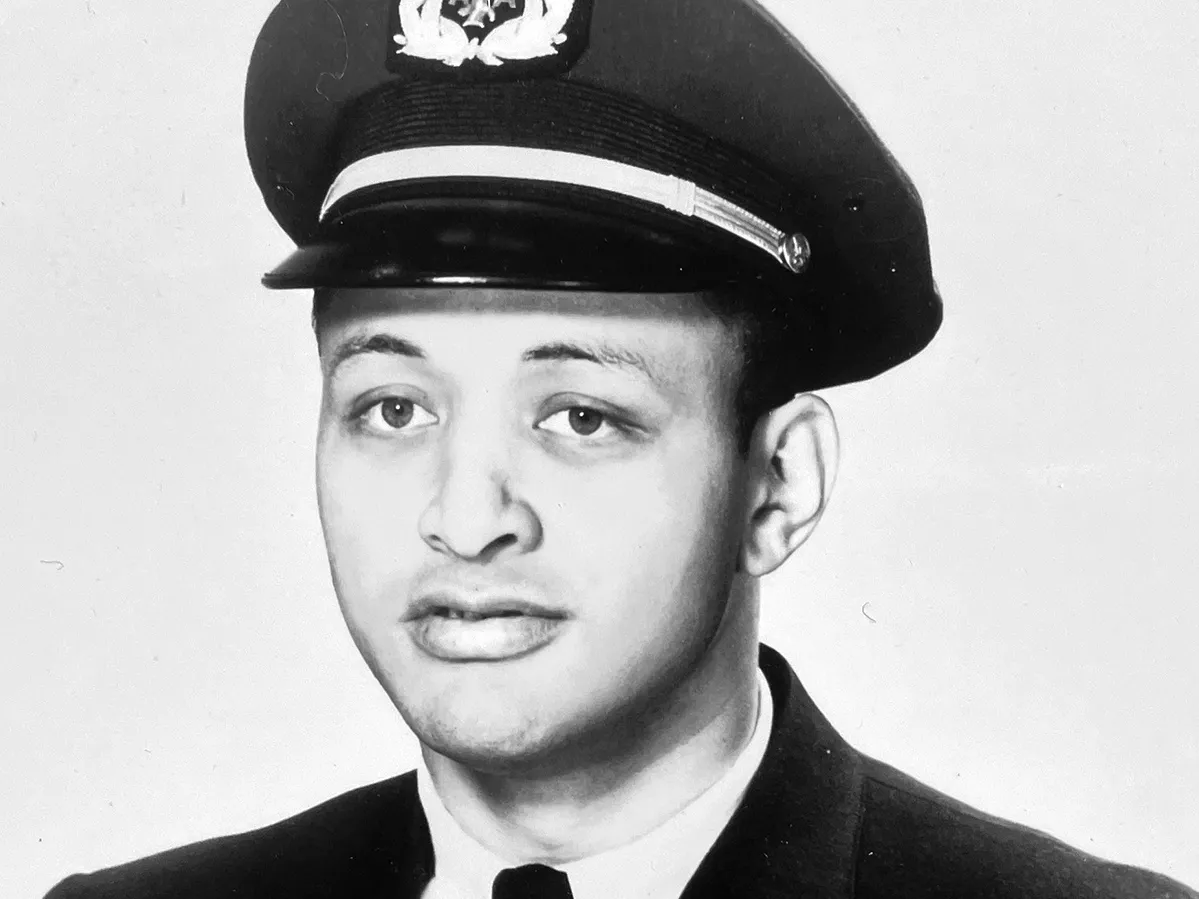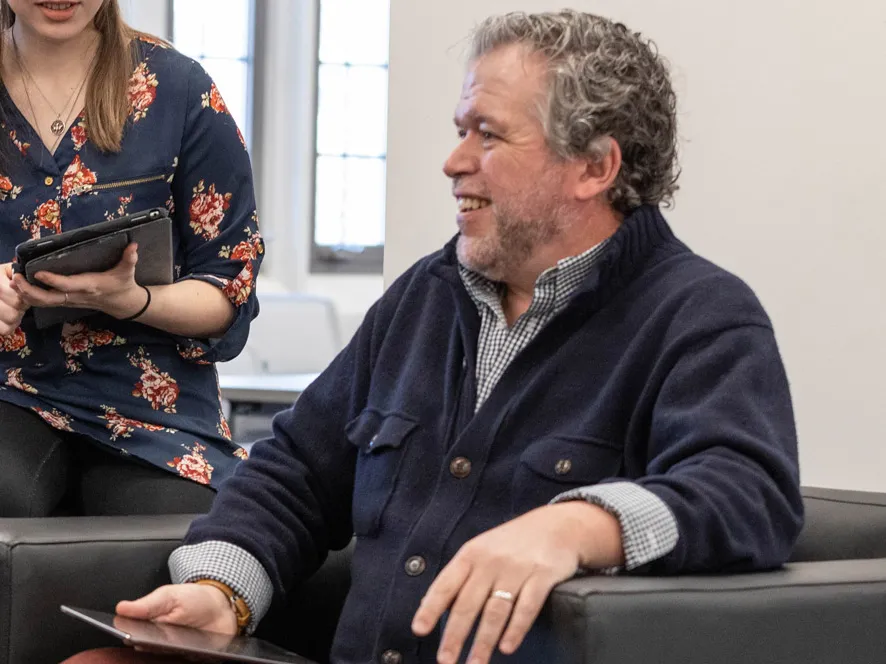George W. Acock helped define the campus experience
This architect and 1963 graduate redesigned Thompson Library and Pomerene Hall and designed several new residence halls.

Not only was George Acock a respected architect; he also was an accomplished watercolor artist. In fact, at a fundraising event in 2000, he sold 140 of his paintings to establish a scholarship for Knowlton students. (Photo by Philip Arnold)
As his reimaginings of Thompson Library and Pomerene Hall show, George W. Acock ’63 was a master of combining architectural legacy and modern artistry to create iconic campus buildings. “He understood Ohio State better than any other architect,” says Keith Myers ’78, the newly retired vice president of Planning, Architecture and Real Estate. “He was not married to any one style and understood how to use materials—brick, limestone, steel, glass. Whatever he built, regardless of the style, this just showed.”
In addition to Thompson and Pomerene, you can see his work in the redesigned Sullivant Hall, Prior Hall and Student Academic Services Building. He designed several new campus dormitories, including the North Residential District, Residence on Tenth and Buckeye Village Community Center.
Acock recognized Ohio State’s diversity of architectural styles as a strength, and the Buckeye community loved him for it, honoring him with a University Distinguished Service Award in 2019 and naming him one of 10 Distinguished Alumni at the Knowlton School of Architecture’s centennial. “People would ask me, ‘Who’s the best architect in Columbus or Ohio?’” Myers says. “There are a lot of talented architects, but my answer was always George. Now, I think that’s a much harder question.”
Acock was 85 when he passed away on March 13. He knew from an early age he wanted to be an architect, inspired and encouraged by a great-uncle in the profession. “I just love architecture; it’s part of my life,” Acock had said.
Four years after he graduated from Ohio State, he founded Acock Associates Architects. He and his team led the design and oversaw the construction of numerous projects across Central Ohio, including several buildings in the Arena District and for the Columbus College of Art & Design, Victoria’s Secret and Bath & Body Works.
But the campus of his alma mater was a special place for Acock, and the redesign of Thompson Library, his most renowned project. “I have a love for this library,” Acock said.
Several nationally prominent architecture firms competed for the project. Acock’s passion came through in his presentation. “He got teary-eyed and choked up,” says Carol Pitts Diedrichs, the former vice provost and director of University Libraries. “We were touched by his passion for the library. That wasn’t the reason he was selected, but it didn’t hurt.”
Video: George Acock tribute

In this 8 minute video from 2018, Acock shares the story of why he made architecture his life, as well as his love for his alma mater. (Video by Ohio State Administration & Planning)
Acock said he wanted the library to “become alive.” His redesign accomplished this goal, adding windows with views of the Oval and a glass-encased atrium for the west entrance. The result is welcoming and cool-looking. “When we reopened after the renovation, traffic went up four times,” Pitts Diedrichs says.
Considering how people would use the spaces he created was always a priority. For example, with the Prior Health Sciences Library renovation in the 1990s, “he wanted to understand what we did and the importance of the [medical] library and how we delivered services,” says Susan Kroll, former director.
A talented artist, Acock often made watercolor paintings of his architectural designs that he used in presentations.
“Saturday mornings with George” is what Myers calls the time he spent learning about painting with his friend. “I have one hanging in my house that I cherish,” Myers says. “It’s a bridge on the Allegheny Gap Trail, the bike path from Pittsburgh to Cumberland, Maryland. I started it, George helped me make it better, and I insisted we both sign it. I’m so glad I did.”




